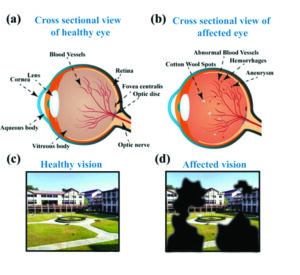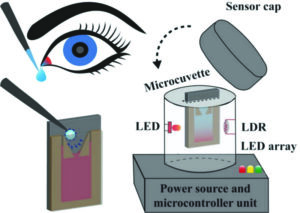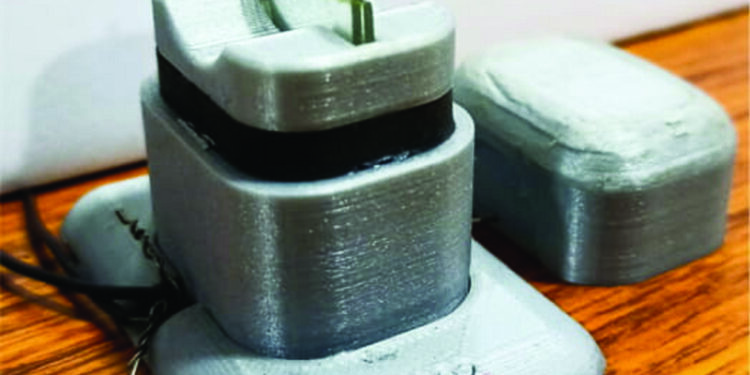GUWAHATI, JUNE 24
Indian Institute of Technology Guwahati in collaboration with Shri Sankaradeva Nethralaya Guwahati, have developed a point-of-care testing device that can detect Diabetic Retinopathy at an early stage, without any need to go for invasive testing.

The research team led by Dipankar Bandyopadhyay, Professor, Department of Chemical Engineering and Head of Centre for Nanotechnology, IIT Guwahati. Descriptions and results of their testing device have been recently published in the ACS journal, ACS Sustainable Chemistry & Engineering. The paper has been authored by Bandyopadhyay and his students, Surjendu Maity, Subhradip Ghosh, Tamanna Bhuyan, at IIT Guwahati. The other author and collaborator Dipankar Das, a Senior Consultant and practicing Ophthalmologist, is the Head of the Department of Ocular Pathology and Uvea in Shri Sankaradeva Nethralaya, Guwahati.
The team has also filed an Indian Patent for this idea and device. The research is funded by the Ministry of Human Resource and Development, Indian Council of Medical Research and Ministry of Electronics and Information Technology, Government of India.

Diabetic Retinopathy is a serious non-communicable disease in India, with a conservative estimate that 11 – 20 million Indians will suffer from this malady by 2025. It is caused by abnormal growth in the retinal blood vessels in people with diabetes, and it is usually worsened when the patient is on insulin for diabetic treatment.
“Currently, the first step in the test for Diabetic Retinopathy is an invasive eye exam, in which the eyes are dilated and the ophthalmologist inspects the eye,” explains Bandyopadhyay. As people who have had eye examination know, this is inconvenient, with blurry vision for a long time after examination. Advanced detection methods such as optical coherence tomography, fluorescein angiography, detection of exudates in retina, and image analysis are complicated and require skilled operators and can show the malady only after it has progressed enough to be detected.
The IIT Guwahati team wondered if there was a simple test such as a blood or urine test, that can detect Retinopathy even before symptoms are seen in the eye. This induced the researchers to look for appropriate biomarkers of Retinopathy – chemicals that are found in body fluids, that can indicate impending or ongoing retinopathy.
The researchers found that β-2-microglobulin (B2M), a protein found in tears and urine, is a reliable indicator for retinopathy. Armed with this knowledge, they set out to develop a device that can detect this protein in these body fluids.
The team developed a device in which the sensing element was an antibody to B2M that was immobilised on gold particles a hundred thousand times smaller than the width of the human hair. When the nanogold-laden antibody came in contact with B2M, there was a colour change.
“We designed a microfluidic system, in which, the body fluid – tear or urine – was drawn into very thin tubes or capillaries, where they came in contact with the gold-antibody nanoparticles, and the change in colour was assessed to detect B2M”, explains the lead researcher. Their prototype microfluidic analyser produced good results with reliable and sensitive detection of B2M, offering promise for design of hand-held, easy to operate detectors for diabetic retinopathy, much like the popular Glucometers for diabetes itself.
Microfluidic devices, also known as microchips and lab-on-a-chip, have been eliciting considerable interest in recent years in the design of such detection devices. The device typically comprises a small plate containing microchannels for guidance of fluids, in this case, a microdrop of urine or tear. Numerous microfluidic devices have already been developed for the biomarker detection in cancer and other diseases, but there are hitherto, none for detection of Diabetic Retinopathy. The IIT Guwahati team’s work is among the first in this area and has tremendous practical implications, especially in India, the diabetic capital of the world.












